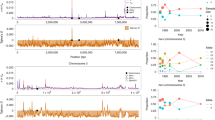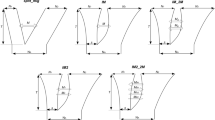Abstract
A full sib mating design was used to select for increased perithecial number in matings between sexually compatible pairs of ascospore progeny of the fungus Cochliobolus heterostrophus. In the third generation of selection approximately one-half of the isolate pairs produced abnormally low numbers of perithecia, indicating segregation at a single locus controlling fertility, which was independent of the mating type locus. We termed the phenomenon secondary sexual incompatibility, although it may also be related to vegetative compatibility. Large numbers of perithecia formed when the paired sexually compatible isolates had different alleles at the locus; few formed when they had identical alleles. Additional studies of two full sib families from another population showed the presence of at least four loci that condition secondary sexual incompatibility among these isolates. High fertility occurred only between isolates with different alleles at least one of the four loci. This phenomenon appears similar to the enhancement of fertility in Ceratocystis ulmi by genes for heterokaryon incompatibility, but the relationship of secondary sexual incompatibility loci to heterokaryon incompatibility loci in C. heterostrophys has not been determined.
Similar content being viewed by others
Article PDF
References
Brasier, C M. 1984. Intermycelial recognition systems in Ceratocystic ulmi: Their physiological properties and ecological importance. D. H. Jennings and A. D. M. Rayner (eds) Cambridge University Press, Cambridge, pp. 451–497.
Burnett, J H. 1975. Mycogenetics. John Wiley and Sons, London.
Esser, K, and Blaich, R. 1973. Heterogenic incompatibility in plants and animals. Advances in Genetics, 17, 107–152.
Falconer, D S. 1980. Introduction to Quantitative Genetics. Longham, New York.
Hebert, T T. 1971. The perfect stage of Pyricularia grisea. Phytopathology, 61, 83–87.
Kolmer, J A, and Leonard, K J. 1985. Genetic Variation and selection for fertility in the fungus Cochliobolus heterostrophus. Heredity, 55, 335–339.
Kolmer, J A, and Leonard, K J. 1986. Genetic selection and adptation of Cochliobolus heterostrophus to corn hosts with partial resistance. Phytopathology, 76, In press.
Leach, J, and Yoder, O C. 1983. Heterokaryon incompatibility in the plant pathogenic fungus Cochiobolus heterostrophus. J of Heredity, 74, 149–152.
Leonard, K J. 1973. Association of mating type and virulence in Helminthosporium maydis, and observations on the origin of the race T population in the United States. Phytopathology, 63, 112–115.
Nelson, R R. 1959. Genetics of Cochliobolus heterostrophus IV. A mutant gene that prevents perithecial formation. Phytopathology, 49, 384–386.
Rayner, A D M, Coates, D, Ainsworth, A M, Adams, T J H, Williams, E N D, and Todd, N K. 1984. The biological consequences of the individualistic mycelium. D. H. Jennings and A. D. M. Rayner (eds) In Ecology and Physiology of the Fungal Mycelium. Cambridge Universtity Press, Cambridge, pp. 509–540.
Webster, R K, and Nelson, R R. 1968. The genetics of Cochliobolus speciferus. I. Genetic inhibition of perithecial and ascus formation. Can J Bot 46, 197–202.
Author information
Authors and Affiliations
Rights and permissions
About this article
Cite this article
Kolmer, J., Leonard, K. Loci independent of mating type that condition secondary sexual incompatibility in the fungus Cochliobolus heterostrophus. Heredity 57, 85–91 (1986). https://doi.org/10.1038/hdy.1986.91
Received:
Issue date:
DOI: https://doi.org/10.1038/hdy.1986.91



